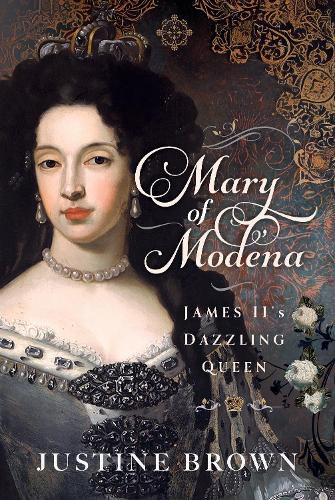Readings Newsletter
Become a Readings Member to make your shopping experience even easier.
Sign in or sign up for free!
You’re not far away from qualifying for FREE standard shipping within Australia
You’ve qualified for FREE standard shipping within Australia
The cart is loading…






The 1688 ?Glorious Revolution? that toppled James II and VII also veiled his consort in propaganda. Mary of Modena: James II's Dazzling Queen reveals the extraordinary woman beneath. Lovely and spirited, Mary Beatrice Isabella d'Este is also England's sole Italian queen. Her father came from an ancient line, while her mother was one of Cardinal Mazarin's seven famed nieces (the ?Mazarinettes?). Mary Beatrice learned the rudiments of governance at her widowed mother's knee, and would one day act as regent of the Stuart court-in-exile-first for King James, then for their son, James Francis Edward. ?The Queen over the Water? would shine as a beacon for the Jacobite cause. Once, Mary Beatrice longed to be a nun. Instead, the young woman had to accept a different mission-marriage to James Duke of York, heir to the thrones of England, Scotland, and Ireland. Although James's conversion to Catholicism made their marriage possible, it set off a firestorm of controversy in the mysterious northern realm. The story of the British Isles was romantic, but the reality was jarring. Thrown into the frenzy of Restoration politics, Mary Beatrice met each fresh episode courageously. Charles II adored his sister-in-law, but MPs strove to annul the ?Italian match? before it could be consummated. She and James fell in love, but his philandering nearly broke her. Building on Este tradition, Mary Beatrice won over the common folk, inspired poets and painters, introduced Italian opera, and drew talented ladies to court. She also attracted her flamboyant Mazarinette cousin Hortense Mancini to England, where she joined King Charles's harem. Ultimately, James and Mary Beatrice were coronated with great ceremony, but their troubles were only just beginning. For the first time in English history, it looked like the birth of a healthy prince might actually destroy the monarchy instead of strengthening it? AUTHOR: Justine Brown has long been fascinated by seventeenth-century culture and history. She holds an M.A. in literature from the University of Toronto and is the author of several books, including The Private Life of James II (Pen & Sword). She also runs a history vlog, Justine Brown's Bookshelf. She lives in London with her husband. 30 b/w illustrations
$9.00 standard shipping within Australia
FREE standard shipping within Australia for orders over $100.00
Express & International shipping calculated at checkout
The 1688 ?Glorious Revolution? that toppled James II and VII also veiled his consort in propaganda. Mary of Modena: James II's Dazzling Queen reveals the extraordinary woman beneath. Lovely and spirited, Mary Beatrice Isabella d'Este is also England's sole Italian queen. Her father came from an ancient line, while her mother was one of Cardinal Mazarin's seven famed nieces (the ?Mazarinettes?). Mary Beatrice learned the rudiments of governance at her widowed mother's knee, and would one day act as regent of the Stuart court-in-exile-first for King James, then for their son, James Francis Edward. ?The Queen over the Water? would shine as a beacon for the Jacobite cause. Once, Mary Beatrice longed to be a nun. Instead, the young woman had to accept a different mission-marriage to James Duke of York, heir to the thrones of England, Scotland, and Ireland. Although James's conversion to Catholicism made their marriage possible, it set off a firestorm of controversy in the mysterious northern realm. The story of the British Isles was romantic, but the reality was jarring. Thrown into the frenzy of Restoration politics, Mary Beatrice met each fresh episode courageously. Charles II adored his sister-in-law, but MPs strove to annul the ?Italian match? before it could be consummated. She and James fell in love, but his philandering nearly broke her. Building on Este tradition, Mary Beatrice won over the common folk, inspired poets and painters, introduced Italian opera, and drew talented ladies to court. She also attracted her flamboyant Mazarinette cousin Hortense Mancini to England, where she joined King Charles's harem. Ultimately, James and Mary Beatrice were coronated with great ceremony, but their troubles were only just beginning. For the first time in English history, it looked like the birth of a healthy prince might actually destroy the monarchy instead of strengthening it? AUTHOR: Justine Brown has long been fascinated by seventeenth-century culture and history. She holds an M.A. in literature from the University of Toronto and is the author of several books, including The Private Life of James II (Pen & Sword). She also runs a history vlog, Justine Brown's Bookshelf. She lives in London with her husband. 30 b/w illustrations